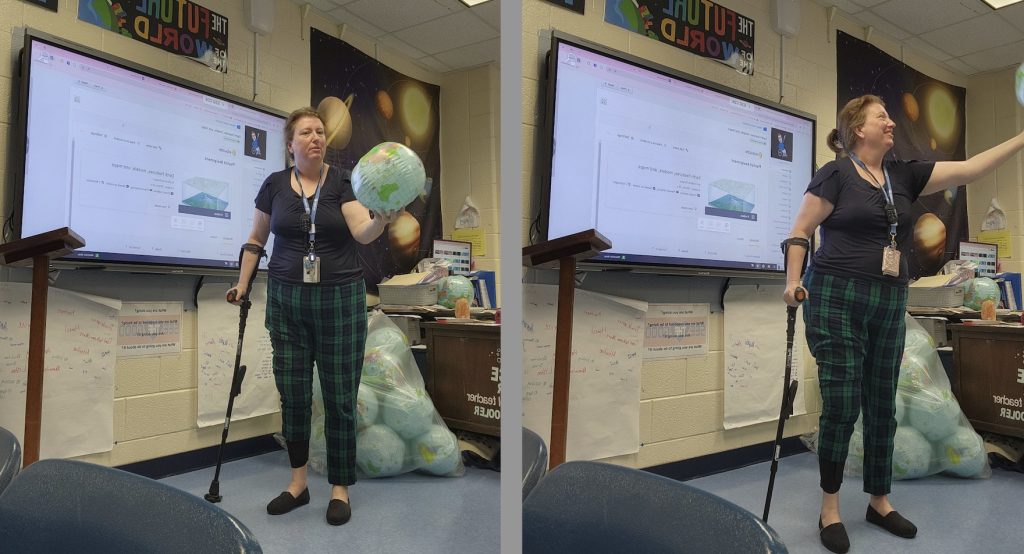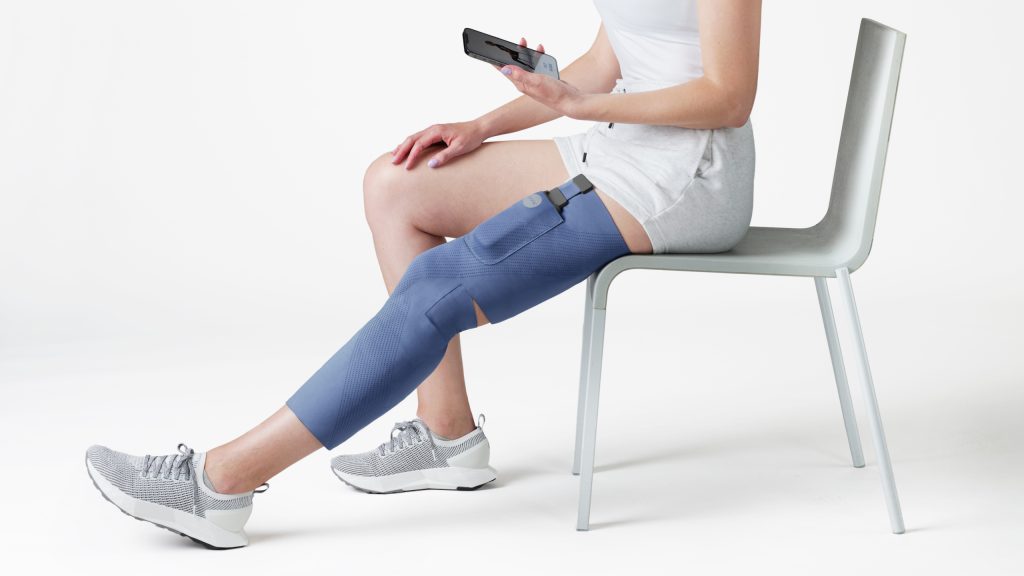
Christine Gregory is a teacher, a deacon, a mother of four, and a grandmother of 15. She is passionate about her life and work, and an active member of her community. In December 2022, just after Christmas, Christine’s world was turned upside down. While running errands in her car, she was struck by a drunk driver. The impact was severe, causing significant injuries to her spinal cord, particularly around the sacral spine nerves. Despite there being no bone injuries, the extensive swelling caused a devastating spinal cord injury, leaving her unable to feel or move from the waist down and in need of intensive spinal cord injury rehab.
The Road to Recovery: A Story of Hope in Spinal Cord Injury Rehab
The initial days after the accident were incredibly challenging. She couldn’t feel or move her legs, and the prognosis was uncertain. After a month, she began to regain sensation and movement in her right leg, but her left leg wasn’t responding in the same way. However, Christine wasn’t one to give up.
She spent the spring of 2023 undergoing extensive physical therapy, where she engaged in passive exercises to encourage movement in her left leg. For months, Christine’s left leg remained unresponsive, with only minimal muscle contraction, not enough to stand or walk independently. The leg would often give out, or she would lose control of it entirely.
Her spinal cord injury rehab journey was long and arduous, taking her out of teaching for the entire spring semester of 2023. Slowly, she began to make progress, driven by personal determination, and aided by the skilled hands of her doctors and therapists. She feels that the combination of modern medicine integrated with recent advances in technology is nothing short of a miracle.
A Miraculous Return to the Classroom
In July of 2023, Christine was ready to return to teaching, but this time, in a wheelchair. It was a significant adjustment, but her love for teaching and her students propelled her forward, in spite of some of the challenges she experienced.
The summer of 2024 brought about a remarkable transformation. Christine had spent the break working tirelessly on her rehabilitation and learning to walk again, a period she refers to as her “Jaime Sommers Summer,” inspired by the fictional bionic woman known for overcoming great physical challenges. When she returned to the faculty gathering before school started, there were tears of joy as she shared her progress, walking at the event in front of some of her colleagues for the first time since the accident.
Now, school is back in session for the 2024-2025 school year, and Christine no longer uses her wheelchair for all mobility. Instead, she leaves her wheelchair at the school and walks in and out herself every day. It’s a large campus and the distance from her classroom to the office is a half-mile, so she switches between walking and using her wheelchair for mobility. She can also now stand up in front of the classroom, write on the board independently, and greet her students at the door.
The Spinal Cord Injury Rehab Game-Changer: Cionic Neural Sleeve
Christine’s progress has been incredible, and the tool she used to return to walking during her “Jaime Sommers Summer” is the Cionic Neural Sleeve. She first heard about it from one of the physical therapists she worked with during spinal cord injury rehab, who thought it might be beneficial. Christine did some research and saw that the Neural Sleeve provided functional electrical stimulation for foot drop, which could be effective at restoring mobility for individuals with spinal cord injuries, such as herself. Christine was willing to try anything that might help her walk again, and her neurologist agreed that it was worth a try.
The Neural Sleeve proved to be a game-changer for Christine. From the moment she began using it, Christine noticed a significant improvement in her ability to lift her foot and bend her knee—movements that had eluded her for over a year and a half. The device’s stimulation helped bring all the mechanical pieces back together, enabling her to walk independently with a crutch for balance.
During her initial onboarding with Alex, her Mobility Specialist, she saw the transformation in her gait immediately. They worked together to build up an exercise program as she started moving and standing again. After a year and a half without walking, Christine had experienced muscle atrophy, so she ramped up, increasing use over time as she rebuilt the muscles.
Building Strength and Independence
CIONIC technology offers a range of programs to support different mobility needs, including those in spinal cord injury rehab. Christine’s current walking program is known as “Step To,” which supports a gait pattern where the foot that swings forward first is then met by the other foot, unlike a “step through” gait pattern where one foot goes in front of the other. Christine’s ultimate goal is to progress to a program designed for a “step through” gait pattern, which includes algorithms and stimulation for climbing stairs.
In addition to her walking program, Christine engages in in-app exercises that are part of the Neural Sleeve’s comprehensive rehabilitation approach. Her favorites include Toe Raises and Knee Extension, both of which help strengthen her muscles and improve her walking ability. She’s noticed that when she’s not wearing the Neural Sleeve, her calf muscles have become more defined, counteracting the disuse atrophy she had been battling.
An Ongoing Journey of Faith and Resilience
Christine’s story is one of incredible resilience and faith. From the difficult moments after her accident to the joy of walking again, she has shown that with determination, support, and the right tools, recovery is possible. Her students, colleagues, and family have rallied around her to support her journey, rooting for her every step of the way. In the classroom, at home, and in her community, Christine stands as a beacon of hope, a reminder that even in the face of overwhelming challenges, the human spirit is capable of remarkable resilience.
About CIONIC:
CIONIC is a bionic clothing company on a mission to superpower mobility for individuals with disabilities. The Cionic Neural Sleeve is an FDA-cleared clothing garment indicated to:
- Improve walking
- Increase strength and range of motion
- Facilitate muscle re-education
It is indicated for individuals with upper motor neuron disorders, including multiple sclerosis, stroke, cerebral palsy, incomplete spinal cord injuries, traumatic brain injuries, and more. Take the assessment to see if it’s a fit for you.

Individual results may vary, and the Neural Sleeve is designed to improve gait and strength for individuals with upper motor neuron diagnoses. Consult your doctor on medical decisions.





